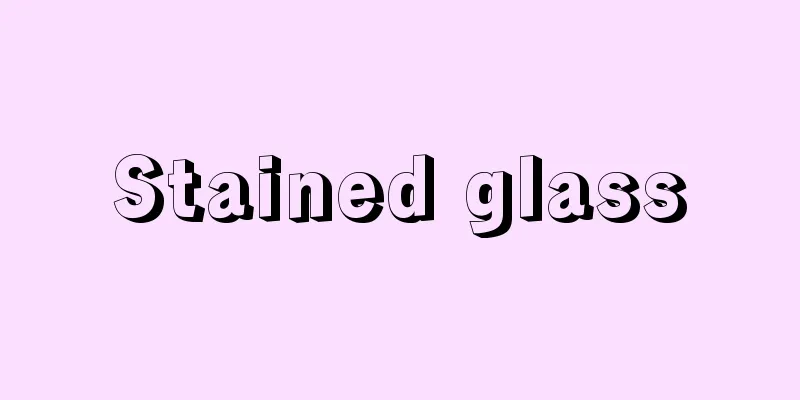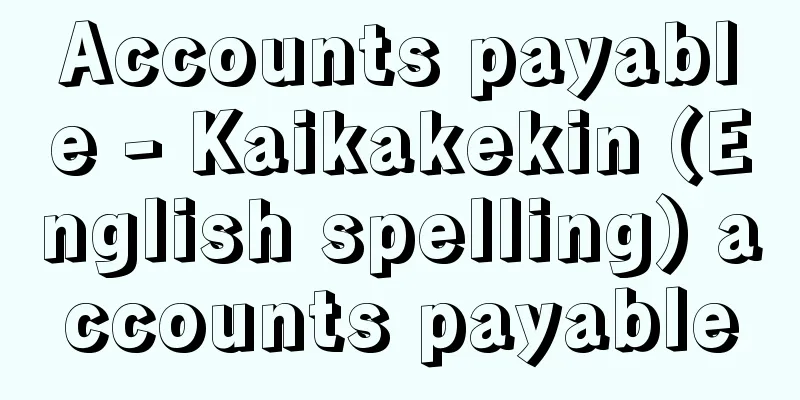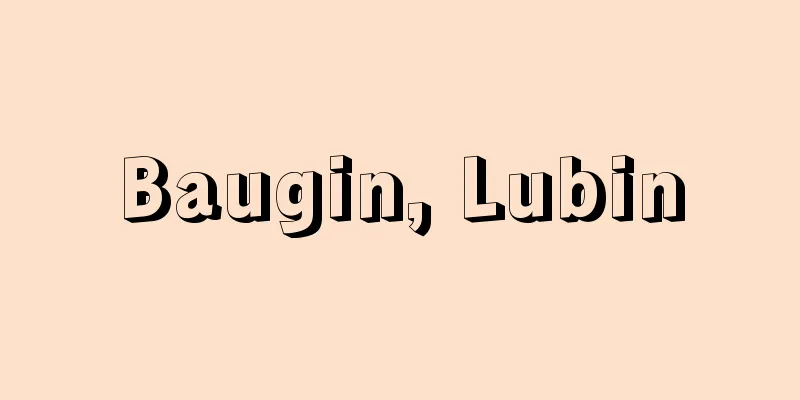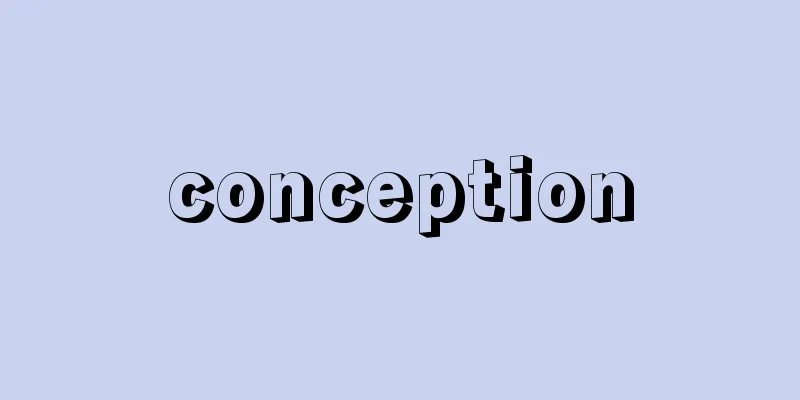National flag - Kokki
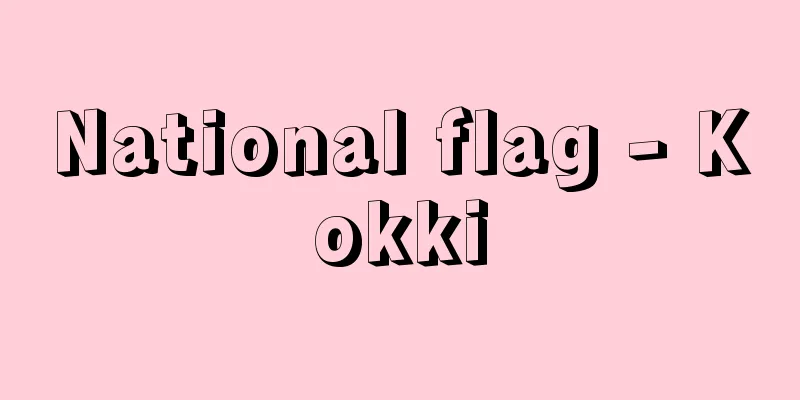
|
A national flag is a symbol of a country, and at times it represents the territory of the country, the authority of the state, or the unity of the people. In recent years, it has also been used to represent a country's membership, as in the display at the United Nations, to show participation, as in international conferences, and to show the victorious country, as in the use of flags in sporting events such as the Olympics. Among the member states of the United Nations, about 120 countries have some kind of provision regarding national flags in their constitutions, and the vast majority of countries, including Japan, have made national flags into law. [Tadamasa Fukiura] History of the flagAncient flagsAncient flags are said to have been used as markers to indicate where soldiers were gathering on the battlefield. The oldest example of a national flag used as a result of archaeology and history is said to be the "white flag" of King Wu of Zhou (around the 12th century BC). There are various kanji characters that mean "hata." In China, they include: "sei (a flag with brightly colored bird feathers. In the past, they were used to encourage soldiers and encourage them to move forward. Later, they were used as flags by envoys)", "ki (a flag with a dragon painted on it and a bell attached to the end of the flagpole)", "sen (a plain red flag. Used to command soldiers and laborers)", "hai (a flag made of cloth of various colors with a tail that opens in two. Used to be placed on top of boats or carts)", "bo (a flag decoration made of hair. Made from the tails of hairy cows)", "ryu (a flowing, swaying streamer)", "ban (a spread-out, hanging flag. The same as a banner)", "shi (a flag raised as a sign)", and "tou (a flag. A hanging decoration wrapped in a silk curtain in a cylindrical shape)". "(On/En)" is a pictograph depicting the swaying of a flag, and represents "hata." Therefore, "zoku" means "arrows gathered under a flag," and "tabi" means "people lining up under a flag." Also, "o" means "to stand still" (Gakken Kanwa Daijiten, edited by Todo Akiyasu). By examining these kanji, we can see the various uses and types of "hata." In other words, at least in China, "hata" played the following roles: (1) a symbol of the same race or group, (2) a landmark for people to gather, and (3) a decoration for ceremonies. Its use in India dates back to the 10th century BC, when there is a description in the epic poem "Mahabharata" indicating the existence of "flags depicting animals." Egypt had the technology to weave and dye fabrics, and used "flags depicting falcons" and decorative poles with falcons on top. In Assyria (13th century BC - 612 BC), the symbol was "a disc depicting a bull or two bulls joined by their tails." Going further down, among the Greek city-states, Athens had the owl, Corinth the winged horse (Pegasus), Biotia the bull, Thebes the sphinx, and Crete the bull-headed human figure (Minotaur) as their symbols. At the National Archaeological Museum in Naples, there is a stone that depicts the Samnites, a tribe known for their bravery in central Italy, hoisting a military standard. Excavated from the ruins of the ancient city of Paestum along the Gulf of Salerno west of Naples, the flag has a border consisting of a "soldier's pole with a streamer and a red flag divided into four sections." This means that the complete form of the flag existed in the 4th century BC. In the beginning, each Roman army used a flag made of a bundle of hay tied to the end of a pole. Later, some army units used a wolf, a half-bull, half-man, a horse, a wild boar, or other symbols as their flag. In order to unify these and prevent unnecessary competition and antagonism between the army units, General Gaius Marius (157-86 BC, known for arming the unemployed citizens to create the first professional soldiers and for his original and major reforms in terms of organization and equipment), who became consul in 104 BC, officially adopted the eagle as the symbol of Rome. As the Roman Empire became increasingly Christianized, cavalry used the vexillum, a square piece of cloth draped around a cross. [Tadamasa Fukiura] Coat of arms and flagIt was only during the Crusades that knights began to use flags freely in Europe. Before that, coats of arms were the norm. From the late Middle Ages, heraldry developed to an extraordinary extent, establishing the principles of design not only for flags but also for general design. Coats of arms were originally painted on soldiers' shields. Shields were made of wood in ancient times. The inverted triangular shape of the Norman shields was highly popular because it was a suitable shape for self-defense. The straight stripes that reinforced this became the basis for the "ordinary type," one of the mainstream styles of Western coat of arms. The other type is the "charge type," which has some concrete image such as an "eagle" or "lion" painted on the shield. At that time, tournaments were often held, run by people called heralds. Knights would dress up beautifully and perform mock battles in front of an audience. Heralds were promoters or callers, hosts, and recite poems in praise of the winners. To make the tournaments more exciting, these heralds were particular about the designs of shields and developed the complicated rules of heraldry. There are many principles of heraldry that are still used in today's national flags. For example, the metallic colors "gold (represented by yellow), silver (represented by white), and black must not touch each other." There are also rules such as "colors such as blue, red, and green must not touch each other, and the spaces between them must be separated by metallic colors," which are all respected in today's national flags. On the other hand, at the end of the 13th century, cities that were members of the Hanseatic League had complicated and strict regulations regarding the raising of flags. Flags became widespread because they were needed in actual battles and because of the influence of the Saracen army, which used cloth flags. The word "Crusader" comes from the Spanish word "Cruz" (cross). Crusaders used various cross symbols to distinguish themselves from the Islamic side. It is said that Crusaders took off their helmets because of the extreme heat and instead wore cloth with a cross on it. Also, because their swords got hot, they covered their entire bodies with coats with crosses on them, which is why the English word "coat of arms" is said to have become the word for coat of arms. These eventually became flags or were painted on shields to become coats of arms. Some flags, such as the current Danish flag with a white cross on a red background and the Austrian red-white-red horizontal tricolor, have their origins in the time of the Crusades. There are legends that a flag fell from the sky when they were struggling, or that their pure white battle coats turned bright red except for the belt area after being covered in the blood of their enemies. There are several examples in Europe of national flags that have taken the colors from coats of arms, such as the Belgian vertical tricolor, which takes its black, yellow, and red colors from the coat of arms of the Duke of Brabant, a "yellow lion with a red tongue on a black background," and the horizontal tricolor of Luxembourg, which takes its red, white, and light blue colors from the coat of arms of the Grand Duke of Luxembourg, a "red lion on a silver base with blue stripes." On the other hand, the tricolor led to the general use of national flags. After the French Revolution, flags that had been reserved for dictators such as kings and emperors, or for heralds, became freely available to the general public. At the same time, flags became symbols of national unity, the independence of civil states, and the political forces that supported them. The coat of arms of Latin American countries are often removed and used in a simplified form within the country. This is called the national flag. However, this can make it difficult to tell which country's flag it is, or it looks exactly the same as other flags, so there are cases where the coat of arms is always used. Mexico's flag is a vertical tricolor of green, white, and red with a coat of arms of an eagle perched on a cactus holding a snake in its mouth in the center. If the coat of arms were removed, it would become the same as Italy's flag. Similarly, of the five Central American countries, El Salvador and Nicaragua would have the same flag if they removed the coat of arms in the middle, as would the three countries that were formerly one country known as Gran Colombia: Colombia, Venezuela, and Ecuador. Many of the flags of the Americas have a coat of arms. Most of the countries in the continent of Central and South America gained independence from Spain. Many independence movements began in the early 18th century, when the home country was invaded by Napoleon and had no time to manage its overseas colonies. The Spanish flag has a coat of arms. During the time of Generalissimo Franco, the coat of arms was a large eagle, but since the country has returned to the monarchy, it has now been changed to a crown. During the Age of Discovery, countries such as Spain and Portugal developed a method of hoisting flags, similar to the current method, in which fabric flags with a relatively small number of colors were hoisted on a pole with a rope. The flags of this time were characterized by a design that allowed sailors to repair any damage to the flag while at sea with the original fabric. The upper part of the pole side, called the canton, became important, and coats of arms and key elements of the design came to be drawn there. This principle continues to this day. [Tadamasa Fukiura] Flag design and colorsFlag aspect ratioThe most common aspect ratio for national flags is 2:3, but there are many others, including the 1:1.9 ratio of the Stars and Stripes and the 1:2 ratio of the Union Jack. For this reason, the aspect ratio of each national flag is standardized for the United Nations and the Olympics, where many national flags are used at the same time, so that the national flags of each country should not appear to be large or small, and for the sake of convenience in production and use. In addition, there are many national flags whose aspect ratios are not strictly determined. For this reason, many foreign publications that introduce each national flag standardize the aspect ratio to 2:3, even if they have to slightly distort the design. In the illustrations in this encyclopedia, each national flag is introduced with a standardized aspect ratio of 2:3. [Tadamasa Fukiura] Flag colorsRed appears most often in national flags, followed somewhat less often by white. This is said to be because it is eye-catching, an inspiring color, and has long been easy to dye. In addition to the Hinomaru, there are currently 14 countries whose national flags are red and white only: Denmark, Austria, Canada, Tonga, Indonesia, Singapore, Turkey, Bahrain, Tunisia, Switzerland, Monaco, Poland, and Georgia. Belarus also used a horizontal white-red-white tricolor flag, but in a referendum in May 1995 it reverted to the Soviet-era flag without the hammer and sickle. Peru uses a vertical red-white-red tricolor flag domestically, and rarely uses a coat of arms. Among the three-color combinations, blue, white, and red are by far the most popular, followed by red, yellow, and green. It originated from the Dutch red, white, and blue tricolor flag, and, influenced by Peter the Great, who "studied" in France, Britain, America, and the Netherlands, it spread from Russia to all Slavic countries. Needless to say, there are many different shades of blue and red. The red color of the "Hinomaru" is not legally specified, but the color of the "Stars and Stripes" is clearly determined to be "red, number 70180" on the color chart of the American Color Council. The Dajokan Proclamations No. 57 and No. 651 of 1870 (Meiji 3), which established the "Hinomaru", state the colors as "Hinomaru on a white background" (No. 57) and "Red sun on white cloth" (No. 651). The Great Japanese National Flag Bill of 1931 (Showa 6) states it as "red on a white background". It is unclear what the brightness, hue, and saturation are, so this is not a strict description in terms of color theory. According to the supplementary provisions of the Law Concerning the National Flag and Anthem (Law No. 127), which came into force in August 1999 (Heisei 11), "The background shall be white, and the sun emblem shall be red," and for the time being, no strict color regulations have been established. In 1962 (Showa 37), graphic designer Nagai Kazumasa (1929-) and others suggested that "in terms of quantity, there would be a greater demand for a mass-produced printed Hinomaru flag than for a national flag dyed onto fabric," and so they specified the red of the new "Hinomaru" as "Dainippon Ink 3072 (magenta) + Z3045 (yellow)." From 1962 to 1963, before the Tokyo Olympics, the Japan Color Research Institute investigated whether it could identify the red of the "Hinomaru" flag, and found that the hue was concentrated in the range of 5.0R to 9.0R, the value was from 3.0 to 5.0, and the saturation was from 12.0 to 16.0. They then calculated the average value, and, respecting the story of Shimazu Nariakira, who said that it was "the color of the first sunrise rising over Sakurajima," analyzed it with a spectrometer just to be sure, and also sought support from the Shiseido research laboratory, which is an "authority on red" through its research on lipstick, and asked for their opinion on the red that Japanese people like. As a tentative standard value, they proposed a color that could be called the standard value of the red of the "Hinomaru" flag, "Japanese name: Kurenai, English name: rising sun red, or Munsell value 8.0R 4.5/15.5." This color is certainly different from the red specified as the red of the "Stars and Stripes." The red is "close to a color that is said to be slightly yellowish vermilion." The color suggested by Kazumasa Nagai and others is closer to the red of the "Stars and Stripes." Looking at the regulations of other countries regarding the representation of red, the British "Union Jack" is recommended by the British Flag Institute as PMS032U of the Pantone color sample book. The Australian "Union Jack" is also recommended by the same institute as PMS185 of the sample book. The Dutch flag has stimulus values according to the International Commission on Illumination's CIE color system display method of X = 18.3 Y = 10.0 Z = 3.0. The Bangladesh flag is the British national color standard H2RS1000 with 60 orange added. The Algerian flag is 6562 angstroms on the Rood contrast diagram, and 285 positions on the normal spectrum. Since the late 1960s, an increasing number of countries have adopted strict methods for determining the colors of their flags, such as by frequency, by the three chromatic elements of hue, brightness, and saturation, by expressing the colors as percentages of ink, or by specifying the colors by numbers on an authoritative color chart. However, there are still inconsistencies, such as (1) the way each national flag displays its colors varies, (2) the colors look quite different depending on the fabric or dyeing method, and (3) there are inconsistencies, such as the use of different reds in the British and Australian flags, which are supposed to be the same, and so the colors are still not globally standardized. When producing flags or creating printed materials for the United Nations, the Olympics, and other events, it is common to display or produce them with a certain standardization of the base fabric colors. Incidentally, for the Tokyo Olympics, each national flag was produced based on 10 base fabric colors. For the Nagano Olympics, this was increased to 15 colors based on inquiries made to the Olympic Committees of each country. Even so, the red of the "Hinomaru" and the red of the "Stars and Stripes" were made exactly the same color. The British Admiralty's " Flags of All Nations ," which has traditionally been considered the world's most authoritative publication on national flags, uses 10 basic colors in addition to black and white. As with both the Tokyo and Nagano Olympics, there is only one shade of red, and blue is basically differentiated into four shades. These are: (1) the navy blue of the Stars and Stripes and the Union Jack; (2) the royal blue of the flags of Greece and Israel; (3) the intermediate blue of the United Nations flag and the Swedish flag; and (4) the azure blue of the flags of Argentina and Ukraine. [Tadamasa Fukiura] Regional characteristics of national flagsThe flag has some regional characteristics. The first characteristic of Asian national flags is that "red is always used in the national flags from Japan to Bangladesh." The only exception is Bhutan, which uses orange to represent Tibetan Buddhism (Lamaism). Another characteristic is that "there is no green in the national flags of East Asia or Southeast Asia." "The first green national flag was Bangladesh," followed by Bangladesh, India, Sri Lanka, Pakistan, Maldives, Afghanistan, Iran, Iraq, Kuwait, Saudi Arabia, and so on. The exceptions are Israel, Bahrain, Qatar, and Yemen. The flag of Yemen with an eagle emblem on its horizontal red, white, and black tricolor is Egypt, while with two green stars it is Syria, and with a green triangle it is Sudan. The Middle East also has many four-color combinations of black, white, red, and green. In the next continent of Africa, Black Africa south of the Sahara, the three colors of green, yellow, and red are by far the most common. The horizontal tricolor flag of Ethiopia, green, yellow, and red, was adopted by various national flags as a color representing the ideal of "African unity" during the "independence boom" that began in Ghana and Guinea in the late 1950s. Some also added black, which represents the people. The three colors were the rule, and as many colonies gained independence at once, there were examples such as Congo, which had the three colors diagonally, and Benin (formerly Dahomey), which had the three colors in a T-shape, which surprised the world at the time. For a long time, European flags did not have stars. For this reason, the flag of the EU (European Union) is a circle of 12 yellow stars, representing the number of original member states when the EU was formed, on a blue background. The flag of Bosnia and Herzegovina, which has been recovering and unifying the country with a large amount of support from the EU, was established on February 4, 1998, with the aim of making an appeal at the opening ceremony of the Nagano Olympics, but at the time it was the only European flag with a design of a row of stars. Next, let us look at the characteristics of the flags of Islamic countries. Needless to say, a national flag is a symbol, and the special respect given to such a symbol seems to be somewhat difficult to understand in the daily life of Muslims who do not approve of idolatry. It is said that Muhammad used a black flag when he fought a fierce war for the purpose of spreading his faith in the 7th century. According to legend, this was a curtain that hung at the entrance to the tent of Muhammad's beloved wife, and even today, many Muslims believe that this flag must still exist somewhere. The caliphs who succeeded Muhammad used different colors for their flags. The Omayyad family used white, which is said to be the color of Muhammad's turban (other theories say that the turban was green), the Abbasid family used black, the same as the Prophet, and the Fatimid family used green, which is said to be the color of the Prophet's coat. However, the Kharijites were in conflict with the other three families and used red, a color not used by the Prophet, for their flag. The family ruled mainly the eastern coast of the Arabian Peninsula, so until the 20th century the flags of the region were almost all red, and traces of this color can still be seen in the flags of Bahrain, Qatar, Oman, and the constituent states of the United Arab Emirates. Since idolatry is strictly prohibited in Islam, the flags of most Islamic countries to this day generally have simple designs, such as no coat of arms. For this reason, many Islamic countries' flags feature verses from the Quran or mosques, or the crescent moon and star that originated from the flag of Turkey, which has confronted Christian powers in Europe, and in Islamic countries, the "Red Cross" and "Red Crescent" societies are also called "Red Crescent" societies. The colors often represent the four caliphs at the beginning of Islam. Conversely, a characteristic of the flags of Islamic countries in the Middle East is that blue is rarely used. Blue was previously used in the flag of South Yemen, but it disappeared in 1993 when it merged with North Yemen. [Tadamasa Fukiura] Japanese flagThe Hinomaru, also known as the Sun Flag, is said to date back to the Shoku Nihongi (797). It is written that on New Year's Day in 701 (the 1st year of the Taiho Era), Emperor Mommu (reigned 697-707) held a morning greeting ceremony in the Daigokuden, with barbarian envoys lined up on either side, and that the decorations for the occasion were a flag with a sun image on the left, a banner with a blue dragon and a vermilion bird on the right, and a banner with a moon image on the right, a banner with a black tortoise and a white tiger on the right. However, there is another theory that this is the origin of the Hinomaru. One theory is that it was a Chinese-style decoration. The pair of ornaments depicting the sun and moon were eventually simplified into gold or silver plates, or into a circle or crescent shape, and are now used on sumo wrestlers' fans, stone lanterns, gagaku musical instruments, and shrine decorations, and have become a separate symbol and social style from the Hinomaru flag. Here, I would like to take the view that an ornament depicting a stylized sun was found in Chinese ceremonial rites, and that part of it was Japanized, eventually becoming the Hinomaru, and over time becoming a symbol of Japan (the original form of the pair of sun and moon remained separate, but was simplified and came to be used alone, in other words, a cultural divergence occurred). During the samurai era, the Hinomaru came to be seen as a symbol of a group of samurai loyal to the Imperial Court. The Hinomaru also appears in stories about Minamoto no Yoshitomo, Nasu no Yoichi Munetaka, Nichiren and Honen during the Mongol invasion. The Hinomaru flag used when Emperor Godaigo visited Mount Kasagi during the Genkō period (1331-1334) has been passed down to the Hori family of Kanao-cho, Yoshino (Gojō City). It is the oldest surviving Hinomaru flag. Around the time of the Onin War, it became even clearer that anyone who rebelled against the Hinomaru was an enemy of the Imperial Court. The Hinomaru was used by many famous military commanders, including Takeda Shingen, Uesugi Kenshin, Date Masamune, Konishi Yukinaga, and Kato Kiyomasa. Several flags similar to the Hinomaru can be seen in the "Battle of Nagashino and Nagakute Screens" and "Battle of Sekigahara Screens." Yamada Nagamasa and Hasekura Tsunenaga used the Hinomaru overseas. In November 1853 (Kaei 6), Shimazu Nariakira, lord of the Satsuma domain, and Tokugawa Nariaki, lord of the Mito domain, proposed that the Hinomaru flag be adopted as the national flag. On July 9, 1854 (Ansei 1), senior councilor Abe Masahiro issued an "Imperial decree regarding ship's crest," which stated, "In order to prevent conflict among foreign ships, the Japanese general ship's crest should be a white Hinomaru flag," and this was promulgated on the 11th of the same month. On January 27, 1870 (Meiji 3), Dajokan Proclamation No. 57 established the "Merchant Ship Regulations," specifying three sizes of the Hinomaru flag to be hoisted on merchant ships: large, medium, and small. These were summarized as "an aspect ratio of 7:10, the size of the circle being 3/5 of the length, and the center of the circle being 1/100th closer to the pole." Furthermore, on October 3 of the same year, Dajokan Proclamation No. 651 was issued, defining the "Naval Imperial Standard, National Emblem, and Other Flags," stipulating that "the aspect ratio is 2:3, the size of the circle being 3/5 of the length, and the center of the circle being in the center of the flag." As the designs for merchant ships and naval ships were different, there was a long-running debate over the design of the Hinomaru flag. Subsequently, all naval-related laws, including No. 651, became invalid under Article 98 of the Constitution of Japan. However, the contents of Dajokan Proclamation No. 57 itself, which was still in effect, had several problems, such as (1) the size of the flag (the problem was that the Large, Medium, and Small flags were all too large for general use because they were for use on ships), (2) whether the aspect ratio of 7:10, which was rare among national flags around the world, was acceptable, (3) where the center of the circle was, and (4) the fact that the regulations on the flag only applied to merchant ships. In February 1931 (Showa 6), House of Representatives member Ishihara Zenzaburo submitted the "Great Japanese Empire Flag Bill" to the 59th Imperial Diet, which was passed by the House of Representatives on March 25th. However, on September 18th, the Manchurian Incident broke out. The National Flag Bill was not debated and was scrapped. The House of Representatives was subsequently dissolved, Ishihara lost his election, and the enactment of the national flag into law was thwarted. After World War II, there were at least three significant movements towards the establishment of a national flag, including the activities of the "Official System Research Council" from 1962 and then Prime Minister Tanaka Kakuei's advocacy for the enactment of the "National Flag Law" in 1973. Even after that, there was no law in place that broadly bound the Japanese national flag's design, and so the 1998 Nagano Olympics used the "Hinomaru" with an aspect ratio of 2:3, a circle that was two-thirds the length of the flag, and the center of the circle was in the center of the flag's surface, while Japan Airlines and All Nippon Airways each used different versions of the "Hinomaru." In February 1999, the principal of a public high school in Hiroshima Prefecture committed suicide after he was troubled by how to respond to the raising of the national flag and singing of the national anthem at graduation ceremonies. This prompted a sudden push for legislation, and on August 9 of the same year, the "Law Concerning the National Flag and Anthem" (National Flag and Anthem Law) was enacted (effective the 13th of the same month). The law only stipulated that the national flag would be the "Hinomaru flag" (the national anthem would be "Kimigayo"), and its formality (along with the lyrics and music of the national anthem) was stipulated in the supplementary provisions, stating that "the height should be two-thirds of the width, the Hinomaru emblem three-fifths of the height, and the center of the Hinomaru emblem should be in the center of the flag," and that the coloring should be "white on the background and red for the Hinomaru emblem." The Dajokan Proclamation No. 57, which had been in effect until then, was abolished, and the confusion over the design of the Hinomaru was resolved. The law does not stipulate any coercive or penal provisions regarding the use of the national flag, etc. [Tadamasa Fukiura] Cross FlagNeedless to say, cross-shaped flags are found in Christian countries. They are particularly concentrated in Northern Europe. The oldest is the Danish flag with a white cross on a red background, called the "Dannebrog Flag" (Red Flag), and the flags of the five Nordic countries of Sweden, Norway, Iceland, and Finland all have the same type of cross. The Union Jack was invented by combining the crosses of England, Scotland, and Ireland, as described below in the section on the Union Jack. Other countries with cross-shaped flags include Switzerland, Greece, and the Dominican Republic, and several flags have crosses in their coats of arms, including the flag of Malta, which features part of the Order of the Garter. When used on merchant ships, the five Nordic flags have a swallow-tailed tip. The flag of Georgia, which was newly established in 2004, also consists of five red crosses. [Tadamasa Fukiura] Tricolor Flagになったんです。 English: The first thing you can do is to find the best one to do. Many countries became independent in 1960, and for this reason, there were cases where three colors were made diagonal, such as the Republic of Congo (formerly the People's Republic of the People's Republic, the capital Brazzaville), or the T-shaped, like Benin. Of course, there are limits to combining only tricolor flags, so there are cases where the white of the French flag is turned yellow, like Chad, and the three green-yellow-red yellow-red yellow-shaped yellow-shaped, like Madagascar, were made white. The Chad flag is the same design as the Romanian flag, which was also born due to the influence of the French flag. There are also many tricolor flags in Latin America. This is because in the early 19th century, independence movements became popular due to the influence of the French Revolution. [Fukuura Tadamasa] Union Jackになったんです。 English: The first thing you can do is to find the best one to do. In addition, in April 1998, the Northern Ireland conflict was reached, and the region's ownership was removed from the Irish Constitution, resulting in a significant reduction in British control. Depending on the progress of the future, it is likely that there will be no guarantee that the Union Jack, which is made up of only the flags of St. George and St. Andrew. Union Jack also appears in the Hawaiian state flag, which is due to the discovery of the islands in 1778. [Fukuura Tadamasa] Star and Stripe Flagになったんです。 English: The first thing you can do is to find the best one to do. In addition, it can be seen in flags such as Brazil, Bolivia, and other countries that the number of stars represents the number of constructs (such as states) in a country. [Fukuura Tadamasa] Red Flagになったんです。 English: The first thing you can do is to find the best one to do.になったんです。 English: The first thing you can do is to find the best one to do. [Fukuura Tadamasa] Flag Raising MethodIn some countries, the flag code is defined and the law provides for the floating law, and the United Nations flag has similar rules. Although Japan does not have such laws, it is desirable to respect common sense and established international etiquette and etiquette. The basic principle of handling national flags is that as a symbol of the country, national flags should be treated with respect and caution. This is specifically shown below. [1] Use the correct design. Some flags in other countries have changed not only due to revolutions and defeats, but also due to the separation of states, the number of states, changes in governments and political systems, etc. There are also examples of the design being changed in a heraldic way. Since the "Nihonmaru" did not change even during the Meiji Restoration or the defeat, Japanese people may lack the awareness that the flag will change, so be careful. Also, in some countries, national flags with different designs may be used depending on the position and location used. Typical examples are the UK and Greece, and the "Union Jack" used by embassies in the UK have a coat of arms. Also, since the land flag and the national flag at sea are different in Greece, yacht competitions also use different designs in yacht competitions. In general, when government officials use national flags, coats of arms are often added, such as Germany, Finland, and Costa Rica. For this reason, national flags with coats of arms often appear in publications published by the United Nations and in Japan that involve the Ministry of Foreign Affairs, but this is something that can be called a government flag, and the general public does not use it or cannot use it. [2] Special care is required when flying vertically. Liechtenstein's flag uses a flag that rotates the crown when raised horizontally by 90 degrees so that the crown does not fall sideways. Also, when a star in a national flag is a major design element, it is customary to rotate the star 90 degrees so that one end of the star faces upwards. Also, like the American flag, you should be careful about flags that have rules that require the flag to be raised horizontally by turning it over so that the canton (top of the pole side) always stands at the top left. [3] Reverse-flapping can sometimes be seen as an insult to a country, and we should be careful of it. In particular, it is important to note that, like the British flag, there are cases where you may not notice the distinction between the top and bottom without careful attention. [4] Pulling down a raised national flag or setting it on fire is a deliberate insulting the national flag and is strictly prohibited. [5] The national flag must be treated in such a way that it is not smashed or dirty. To do this, when raising it on a pole, it is desirable to raise it with multiple personnel (preferably three or more people). In other words, the person who pulls the rope, the person who holds the national flag when it is pulled up, and the person who commands or observes it. The rope must be secured tightly, and one end of the national flag does not leave the pole. [6] There are three ways to raise a national flag to express condolences: (1) If there is a national flag tower, lift it up to the top and then lower it halfway through; (2) For home poles, cover the head of the pole with black cloth, or a thin black cloth hanging from the head of the pole; (3) For attaching it indoors, make a black or white and black ribbon on the top edge of the pole side, and hang the edge of the cloth. [7] We should avoid using torn flags forever. In the past, warships and merchant ships had a tradition of keeping the fabric dyed in the original, dyed fabric, and sailors and sailors renewing the damaged parts of national flags and signal flags, but this is rare today. The principle of torn flags is incinerated. Also, writing letters and patterns on national flags is not often done outside of Japan. [8] Flooding should be avoided in rainy weather or at night without a control system. [9] When raising multiple national flags at the same time, the ball must be raised to the top of the pole in a balanced manner, in line with the brass band, etc. Also, the raised position is determined according to the principle that the "left facing towards the left" and "highest position" are at the top. [10] The United Nations flag must always be raised at the top. [Fukuura Tadamasa] Crime of damage to national flagsになったんです。 English: The first thing you can do is to find the best one to do. In the "Japanese-style incineration case" that occurred during the Okinawa National Athletics in 1987 (Showa 62), the Naha District Court ruled that one year in prison and three years suspended for imprisonment, but there was no other law to apply, and the crime was "a crime of property damage." Incidentally, looking at the criminal laws of other countries regarding the damage to a foreign flag, in the Republic of China (Taiwan), the "fixed term sentence for up to one year, a detention or fine of up to 300 yuan" (Article 118), in Germany, "incarceration or fine of up to two years" (Article 104, paragraph 1), in Switzerland, "light imprisonment or fine" (Article 298), and in the Czech Republic, "incarceration or fine of 14 days or more and up to six months" (Article 145, paragraph 1), and many of the sentences include the principle of public use. All three countries, except Taiwan, contain words that are intended for official use, such as "the flag used for the official use of that country (Switzerland)." The damage to their own flag is strictly forbidden by the criminal laws and flag laws of many countries, not only in the United States, but also in many countries. China also enacted the National Flag Act in 1990, which established provisions such as detention for anyone who insulted a national flag or national emblem for less than 15 days in the event of mild cases, imprisonment for less than three years in the event of serious cases, or disenfranchised political rights, and was also required to raise the national flag during the Chinese New Year (Lunar New Year). [Fukuura Tadamasa] Troubles over the national flagになったんです。 English: The first thing you can do is to find the best one to do. Japan has made at least twice a major mistake after the war with foreign flags. Both were in 1958 (Showa 33). One was the incident in which China (Republic of China)'s "Blue Ten Hakui Flag" was raised upside down due to the carelessness of staff at an Asian Games held in Tokyo. The award ceremony was immediately re-started, and the Secretary-General of the Organizing Committee and the Ceremony Chairman visited the Republic of China's leader with an apology, but six years later, in 1964, the "Blue Ten Hakui Flag Reversal Incident" was a shocking event for Japan, where the public and private sector, was working together to carry out the long-awaited Olympics in Tokyo. The other is the Nagasaki Flag Incident, in which a thug pulled the "Five Star Red Flag" of the People's Republic of China on May 2, at an event hosted by the Japan-China Friendship Association in Nagasaki. On December 3 of the same year, the Nagasaki Summary Court, which dealt with the incident, was sentenced to a fine of 500 yen, for "violating Article 1, No. 31 and No. 33 of the Misdemeanors Act." At the time, Japan recognized the Republic of China as China, so the "Five Star Red Flag" could not be considered a foreign flag, and Article 92 of the Criminal Code could not be applied. In the Diet, Prime Minister Nobusuke at the time said, "It is impossible for a request from a country that does not approve it, so Article 92 would not be applied," and stated that the "Five Star Red Flag" could not be considered a national flag for Japan. Due to this incident, the trade agreement was sacked, and Japan-China trade was suspended. National flags sometimes impress people, but sometimes they can cause trouble to a tournament and stop trade. There have been so many troubles that there have been countless issues, such as the mistaken flags between South Korea and North Korea at an international skating match in Sapporo, the mistook of the Austrian and Thailand flags in the official guidebook of the Osaka Flower Expo (the official flag with a coat of arms of arms was featured) and the British flags were raised in the national stadium under the jurisdiction of the Ministry of Education (now the Ministry of Education, Culture, Sports, Science and Technology), the British flag at the main gate of the Diet was turned upside down, and the famous hotel raised the flags backwards and greeted the VIP, and the head of the ball was slumped. There were also design issues. "Like my family doctors, I aim to take care of my medicines close to you." The Swiss Embassy in Japan received a complaint from the Swiss Embassy in Japan saying, "It looks very similar to our national flag. It is in contact with the Paris Convention, which decided to protect the national flag internationally, so please stop it," and the Japan Pharmacists Association, which decided to decide on this, suddenly took measures to improve the process. The "Safety First" Green Cross mark cannot be considered unquestionable, given the Geneva Convention, which decided to protect the Red Cross mark. When the World Blood Works Conference was held in the Auditorium of the Japanese Red Cross Head Office in Shiba, Tokyo, the Japanese Red Cross flag was prepared as the Iranian flag, and the Japanese Red Cross was protested. Of the 23 million attendance cards distributed to elementary school students nationwide during morning radio exercises organized by the Ministry of Posts and Telecommunications Simple Insurance Bureau (now Japan Post Insurance), 500,000 copies of the flag designs that were previously published by the Revolutionary Master Khomeini and others, the department officials decided to apologise to the Iranian embassy in Tokyo and Mita, and hand out stickers to post offices nationwide, and have them be replaced. になったんです。 English: The first thing you can do is to find the best one to do. However, this should not lead to something like "learn to learn from the singular part and play the singular part." A national flag celebrates people's efforts and glory, excites moving drama, and can also serve as a starting point for understanding and interest in a country. And above all, respecting a national flag means respecting that country. Furthermore, the more you know about the country's geography, history, politics, economy, industry, religion, culture, international relations, flora and fauna, the more you will understand the national flag, and the more you can say the other way around. [Fukuura Tadamasa] [Reference items] | | | [Complete Materials] |©Shogakukan "> The establishment of Union Jack The United States achieved independence in 1783, gradually expanded its territory, and as a result the number of states increased, and the national flag also changed. The 13 clauses represent the 13 states when the flag was first founded, and the number of stars in the corner of the flag represents the number of federal states, and the number of stars has been changed 26 times to date. Note: The circled numbers on the map indicate the order of territorial expansion ©Shogakukan "> The changes in the Stars and Stripes [Corrective way to lift] The national flag is always raised at the top of the flagpole, facing the top of the pole. [How to lift half-mast] Once raised to the top of the pole, then lower it to the appropriate place. [How to raise it to the gate or entrance] In principle, raise it to the right side (left when seen from outside the gate) as seen from inside the gate. If there are two Japanese circles, it is free to join or cross, but it is desirable to join. [How to lift it together with other flags] When raising the Japanese flag and other flags at the front of the gate, raise the Japanese flag on the right gate post (left when seen from outside the gate) and the other flags on the basin. [How to lift it when seen from inside the gate] The Japanese flag pole should be suspended on the right side (left when seen from outside the gate), but the root of the pole is opposite. The Japanese flag pole should be crossed in front of the gate from outside the gate. [How to lift inside the venue] When raising the flag on a venue or other field, the Hinomaru is raised on the right side of the person on the field (left side of the audience), and the other flags are raised on the left side. [How to lift in a car] If only the Hinomaru is raised, the flag should be on the right side (left side), and when other flags are raised together, the other flags should be on the left side (right side). [How to lift when marching] When marching with other flags, the flags should be on the right edge of the front row (top image) or away from the line and out in front and in the center of the march line (bottom image). Note: When raising a national flag, as a general rule, the right side (left side) is the highest, but in Japan, when raising a Japanese flag and a foreign flag, the flag of the other country is at the top ©Shogakukan "> How to raise the Japanese flag になったんです。 English: The first thing you can do is to find the best one to do . How to raise Japanese and foreign flags Source: Shogakukan Encyclopedia Nipponica About Encyclopedia Nipponica Information | Legend |
|
国旗は国のシンボルであり、時に応じ、国の領域、国家の権威、国民の統合を表徴する。また、近年では国連における掲示がそうであるように国の加盟を表したり、国際会議のように参加を表示したり、オリンピックなどスポーツ競技会での使用のように勝利者の国を示すために用いられたりする。国連加盟国中、約120か国が憲法で国旗に関するなんらかの規定を設けており、日本をはじめ、ほとんど大部分の国では国旗を法制化している。 [吹浦忠正] 国旗の歴史古代の国旗古代の旗は戦場で将兵の集合地を示す目印として用いられたとされる。考古学や歴史学の成果としての国旗のいちばん古い使用例は周の武王(紀元前12世紀ごろ)の「白い旗」であるとされる。 漢字には「はた」を表す文字がいろいろある。中国では「旌(せい)(あざやかな色の鳥の羽をつけたはたじるし。昔は兵卒を元気づけて進めるために用いた。のち、使節の持つはたじるし)」「旂(き)(竜を描き、はたざおの端に鈴をつけたはた)」「旃(せん)(無地で赤い旗。兵や人夫を指揮するのに用いた)」「旆(はい)(いろいろな色の布で、二つに開く尾をつけたはた。舟や車の上に立てる)」「旄(ぼう)(毛でつくったはたかざり。毛深い牛のしっぽを用いた)」「旒(りゅう)(流れるようにゆらゆらするふきながし)」「旛(ばん)(広げてたらしたはた。幡と同じ)」「幟(し)(のぼり。目じるしのためにたてる旗)」「幢(とう)(はた。絹の幕で筒型に包んでたらした飾り)」などである。「(おん/えん)」ははたのゆらめくさまを描いた象形文字で、「ハタ」を表している。したがって、「族」は「旗の下に矢を集めて置いたさま」のことであり、「旅」は「人々が旗の下に隊列を組むことを示す」。また、「於」は「じっとつかえて止まることを示す」(藤堂明保編『学研漢和大字典』)。 こうした漢字を調べていくと「ハタ」の使用目的や種別がいろいろと判ってくる。すなわち、少なくとも中国では「ハタ」には(1)同族、同集団であることを示すシンボル、(2)人が集まるための目印、(3)儀式などでの飾り、といった役割があったといえるのではないだろうか。 インドでの使用も古く、紀元前10世紀ごろの叙事詩『マハーバーラタ』には「動物を描いた旗」があったことを示す記述がある。エジプトは織布や染色の技術をもっており、「ファルコン(ハヤブサ)を描いた旗」やファルコンを頂いた飾り棒を使用していた。また、アッシリア(前13世紀~前612)のしるしは「1頭の雄牛や2頭の雄牛がしっぽでつながっているようすを描いた円板」であった。 下って、ギリシアの都市国家ではアテネが「フクロウ」、コリントが「天馬(ペガソス)」、ビオティアが「雄牛」、テーベが「スフィンクス」、クレタが「牛頭人身像(ミノタウロス)」をシンボルにしていた。ナポリの国立考古学博物館にはイタリア中部地方の勇猛果敢な部族として知られたサムニウム人が軍旗を掲げているようすを描いた石がある。ナポリ西方のサレルノ湾に添った古代都市パエストゥムの遺跡から掘り出されたもので、「兵士の捧(ささ)げる竿に吹流しと四つに仕切られた赤い旗」からなる縁のついた旗がある。完成された形態の旗が紀元前4世紀に存在していたということを意味する。 ローマでは初めはどの部隊も「干草の束」を結んで竿の先端につけたものを目印にしていた。その後、「オオカミ」「半牛半人」「ウマ」「イノシシ」などを旗印にする部隊も出てきた。これを統一し、部隊間の無用の競争や反目を防ごうと、紀元前104年にコンスルに就任したガイウス・マリウス将軍(前157―前86、無産市民を武装させて初の職業軍人を出現させたり、編成や装備の面でも独創的な大改革をしたことで知られる)が「ワシ」を正式にローマのしるしとして採用した。 ローマ帝国のキリスト教化が進むにつれ、騎兵隊はべクシルムvexillumという「十字架に縁どりした正方形の布をたらしたもの」を用いた。 [吹浦忠正] 紋章と国旗旗を騎士が自由に用いるようになったのは、ヨーロッパでは十字軍時代になってからのことである。それまではむしろ紋章が主体であった。 中世後期から「紋章学(heraldry)」が異様ともいえるほど発達し、旗のみならず一般のデザインの原則をも確立した。紋章は初めは兵士の盾に描いたものであった。盾は古くは木製だった。ノルマン人の逆三角形のような盾が身を守るのに適した形だということでこれが大いにもてはやされた。これを補強するための帯の直線模様が、西洋の紋章の主流の一つである「オーディナリ型」のもととなった。他の一つは盾に「ワシ」や「ライオン」といったなんらかの具体的な絵を描く「チャージ型」の紋章だ。 このころ、ヘラルドherald(紋章官)といわれる人たちが取り仕切るトーナメントがよく行われた。騎士が美しく着飾って観客の前で模擬戦闘を披露するというものである。ヘラルドは勧進元ないし呼び屋であり、進行役であり、勝者をたたえる詩を披露する役でもあった。このヘラルドたちはトーナメントをより盛り上げるために盾のデザインに凝り、紋章学なる煩瑣(はんさ)なルールを練り上げていった。 今日の国旗にも生かされている紋章学の原則はいろいろある。たとえば、メタリックといわれる「金(黄色で代行)、銀(白で代行)、黒は互いに接触してはならない」という規則。また、カラーとよばれる「青、赤、緑など有彩色は互いに接触してはならず、その間はメタリックでくぎられていなければならない」などの規則があり、今日の各国旗でもかなり尊重されている。 他方、13世紀末のハンザ同盟加盟都市においては、旗の掲揚について煩瑣でかつ厳格な規定を設けていた。 旗が普及したのは、旗が実戦で必要とされたことや、布製の旗を用いたサラセン軍の影響で定着した習慣といえよう。十字軍Crusaderということばはスペイン語のCruz(十字架)からきたことば。十字架のしるしをさまざまに用いてイスラム側と区別していた。あまりの暑さで兜(かぶと)を脱ぐかわりに十字を描いた布をかぶったと伝わっている。また、剣が熱くなるので体全体を十字架のついたコートで覆ったことから、英語の「紋章」ということばがCoat of Arms(武器を覆う陣羽織)ということばになったといわれている。これらがやがて旗になったり、盾に描かれて紋章になった。 現在のデンマークの赤地いっぱいの白十字の国旗やオーストリアの赤白赤の横三色旗のように、この十字軍の時代に起源をもつものもある。苦戦を強いられていたとき天から旗が降ってきたとか、相手の返り血を浴びて純白の陣羽織がベルトの部分を除いて真っ赤になったという伝説が残っている。 こうした紋章から色をとって国旗にしたという例はヨーロッパにいくつかある。「黒地に赤い舌を出した黄色いライオン」というブラバント公家の紋章から黒黄赤の色をとったベルギーの縦三色旗、「青の縞(しま)のある銀の台上の赤いライオン」というルクセンブルク大公家の紋章から赤白薄青の色をとったルクセンブルクの横三色旗などである。 他方、三色旗は国民一般の国旗の使用を導いた。王や皇帝など独裁者のものだったり、紋章学者のものだった国旗がフランス革命以降、国民が広く自由に使えるようになった。同時に、国旗が民族の統一、市民国家の独立、支持する政治勢力を示す象徴にもなった。 中南米の国旗の紋章は、国内ではしばしば取り除いた略式の形で用いられる。これを国民旗とよぶ。ただ、それではどこの国旗かわからなくなったり、他の旗とまったく同じになってしまうというので、いつも紋章付を用いるという例もある。メキシコの国旗は緑白赤の縦三色旗で中央に「サボテンに止まったワシがヘビをくわえている紋章」のついたもの。紋章を取り除いてはイタリアと同じ旗になってしまう。同様に、中米5か国のうち、エルサルバドルとニカラグアは中の紋章をとっては同じ旗になるし、コロンビア、ベネズエラ、エクアドルのかつて大コロンビアとして一つの国となっていた3国も同じである。 南北アメリカの国旗には紋章のついたものが多い。中南米の大陸部のほとんどの国はスペインからの独立国。18世紀の初め、本国がナポレオンによる侵略を受けて海外植民地経営どころでなかった時期に、多くの独立運動が端を発している。そのスペインの国旗が紋章付。フランコ総統の時代には大きなワシのついた紋章であったが、王制に戻った現在は王冠に変わった。 そのスペインやポルトガルなどによる大航海時代から、布製の比較的色数の少ない国旗をロープでポールに掲げるという現在の国旗掲揚方式に近い使用が発達した。船乗りが航海中、旗の破損を原反布で補修することができるというデザインがこの当時の国旗の特徴である。カントンとよばれる竿側(かんそく)上部が重要視され、そこには紋章やデザイン上の基幹となるものが描かれるようになった。今日もその原則は続いている。 [吹浦忠正] 国旗のデザインと色国旗の縦横比各国旗でいちばん多い縦横比は2対3であるが、ほかにも「星条旗」の1対1.9、「ユニオン・ジャック」の1対2をはじめ、さまざまな比率がある。このため、多数の国旗を併用する国連やオリンピックでは各国の国旗に大小を感じさせてはならないことや、製作や使用上の便宜など総合的な見地から、各国旗の縦横比を統一している。また、各国旗には、かならずしも縦横比が厳密に決まっていない国旗が少なくない。このため各国旗を紹介する諸外国の出版物でも2対3に統一し、デザインを若干デフォルメせざるをえなくとも、そうしているものが多い。本百科事典の図版では各国旗を2対3の縦横比に統一して紹介した。 [吹浦忠正] 国旗の色国旗にいちばん多く登場するのは赤、やや少なく白が続く。目だちやすいこと、奮い立たせる色であること、古来染色しやすい色だったことなどによるという。赤と白のみの国旗は、「日の丸」のほか現在、デンマーク、オーストリア、カナダ、トンガ、インドネシア、シンガポール、トルコ、バーレーン、チュニジア、スイス、モナコ、ポーランド、ジョージア(グルジア)の計14か国。ベラルーシも白赤白の横三色旗であったが、1995年5月の国民投票でソ連時代の旗から鎌と槌(つち)を取り除いたものに戻った。ペルーは国内では赤白赤の縦三色旗で紋章はめったに用いない。 3色の組合せでは、青白赤が断然多く、ついで、赤黄緑。オランダの赤白青の三色旗が始まりで、フランス、イギリス、アメリカ、そしてオランダに「留学」したピョートル大帝に影響を与えて、ロシアからスラブ諸国全体に広まった。 青や赤といってもさまざまな色があるのはいうまでもない。「日の丸」の赤の色は法的に規定されていないが、「星条旗」はアメリカ合衆国色彩協会の色票番号で「70180番の赤」ときちんと決まっている。 「日の丸」を制定した、1870年(明治3)の太政官(だじょうかん)布告第57号と同651号では色について、「白地日の丸」(57号)、「白布紅日章」(651号)と表記されている。また、1931年(昭和6)の大日本国旗法案では「白地に赤」。明度、色相、彩度がどんなものなのか不明で、色彩学的に厳密な表示とはいえない。1999年(平成11)8月に施行された国旗及び国歌に関する法律(法律第127号)の附則によると「彩色は地が白色、日章は紅色」とされ、当面、厳密な色の規定は定められていない。 1962年(昭和37)、グラフィックデザイナーの永井一正(かずまさ)(1929― )らは「日の丸は量的にみて生地に染色した国旗よりも印刷してマスプロされた国旗のほうが需要が多いのではないか」ということで、新しい「日の丸」の赤を「大日本インキ3072(マゼンタ)+Z3045(イエロー)」と明示した。 東京オリンピックを前にした1962年から1963年にかけて、日本色彩研究所が「日の丸」の赤を特定することはできないかと調査し、色相は5.0Rから9.0Rまでに、明度は3.0から5.0までに、そして彩度は12.0~16.0までの範囲に集中していることが判った。そこで、その平均値を求め、さらに、「桜島に昇る初日の出の色」といったという島津斉彬(なりあきら)の故事も尊重して念のため分光機で分析したり、口紅の研究で「赤の権威」となっている資生堂の研究所にも応援を求めて日本人の好みの赤について意見を求めたりもした。そしていちおうの基準値として、「和名:くれない、英語名rising sun redすなわちマンセル値8.0R 4.5/15.5」という「日の丸」の赤の標準値とでもいうべき色の提案をした。この色は、「星条旗」の赤として規定された赤に比べると確かに違う。「やや黄みがかった朱といわれる色に近い」赤ということになる。永井一正らの指示した色のほうがまだ「星条旗」の赤に近い感じだ。 赤の表記について他の国の規定をみてみると、イギリスの「ユニオン・ジャック」は、イギリス国旗研究所がパントン色見本帳のPMS032Uと勧告。オーストラリアの「ユニオン・ジャック」も、同研究所の見本帳のPMS185。オランダ国旗は、国際照明委員会のCIE表色系表示法による刺激値で、X=18.3 Y=10.0 Z=3.0。バングラデシュ国旗は、イギリス国色彩基準のH2RS1000に対しオレンジ60を加えたもの。アルジェリア国旗は、ルードのコントラスト・ダイアグラムの6562オングストローム、ノーマルスペクトラムの285ポジションとなっている。 1960年代後半から、旗の色を周波数で決めたり、色彩学的に色調、明度、彩度の色の3要素で決めたり、具体的にインクの%で表示したり、権威ある色票の番号で規定するなど厳密な決め方をする国が増えてきた。ただ、(1)各国旗の表示法がばらばら、(2)布地や染色法で見た目にかなり違って見える、(3)同じはずのイギリス国旗とオーストラリア国旗で赤が違うなどという矛盾があるなど、いまだ世界的に標準化されていない。 国連やオリンピックを始め、旗の製作や印刷物の作成にあたっては、原反色についていちおうの統一を図って表示したり、製作しているのが常である。ちなみに、東京オリンピックでは10色の原反をベースに各国旗を製作した。長野オリンピックでは各国オリンピック委員会に照会した結果に基づき、15色に増やした。それでも「日の丸」の赤も「星条旗」の赤もまったく同じ色にした。従来、世界でもっとも権威ある国旗の出版物とされてきたイギリス海軍省の『Flags of All Nations』では黒、白のほか10色が基本色。赤は1色、青は基本的に4段階の濃淡で区別しているのは東京、長野両オリンピックの場合も同じだ。すなわち、(1)星条旗やユニオン・ジャックの「ネイビー・ブルー(濃紺)」、(2)ギリシアやイスラエルの国旗の「ロイヤル・ブルー(紺青)」、(3)国連旗やスウェーデン国旗の「インターメディエイト(サックス)・ブルー(空色)」、(4)アルゼンチンやウクライナ国旗の「アズュール(ライト)・ブルー(薄水色)」である。 [吹浦忠正] 国旗の地域的特徴国旗にはいくつかの地域的な特徴がある。 アジアの国旗では、「日本からバングラデシュまでの国旗にはかならず赤が用いられている」というのが第一の特徴。例外は、チベット仏教(ラマ教)をオレンジ色で表したブータンのみ。もう一つの特徴は、「東アジア、東南アジアの国旗には緑がない」ということ。「緑の国旗はバングラデシュから」で、バングラデシュ、インド、スリランカ、パキスタン、モルジブ、アフガニスタン、イラン、イラク、クウェート、サウジアラビア……と続く。例外はイスラエル、バーレーン、カタール、イエメン。そのイエメンの赤白黒の横三色旗にワシの紋章のついた国旗がエジプト、緑の二つ星をつければシリア、緑の三角形をつけたのがスーダンである。中東はまた黒白赤緑の4色の組合せが多い。 続くアフリカ大陸、サハラ以南のブラック・アフリカでは、緑黄赤の3色が断然多い。エチオピアの緑黄赤の横三色旗が1950年代後期からのガーナ、ギニアに始まる「独立ブーム」で「アフリカ統一」の理想を託す色として各国旗に取り入れられた。なかには国民を表す黒を加えたのもある。3色を原則とし、多くの植民地が一挙に独立したため3色を斜めにしたコンゴやT字型にしたベナン(旧、ダオメー)といった例もあり、当時、世界を驚かせた。 長らくヨーロッパの国旗には星がなかった。このためEU(ヨーロッパ連合)の旗は青地にEUとなったときの原加盟国数である12の黄色い星を円状に並べたものとされた。そのEUの支援を大きく受けて国の復興を進め、統一を図ったボスニア・ヘルツェゴビナの国旗は1998年2月4日、長野五輪開会式でアピールすることを狙って制定されたものだが、当時はヨーロッパの国旗で唯一、星を羅列したデザインであった。 次にイスラム諸国旗の特徴についてみてみよう。いうまでもなく国旗は一つのシンボルであり、そのシンボルを特別に尊重するということは、偶像崇拝を認めないイスラム教徒の生活慣習には、いまひとつなじみにくいものがあるようだ。7世紀にムハンマドが布教を目的とする激しい戦争をしたときには黒い旗を用いたと伝えられている。言い伝えによれば、これはムハンマドの愛妻のテントの入口にかかっていたカーテンだったもので、いまでもイスラム教徒のかなりの人々は、この旗がどこかに現存しているはずだと信じているとのこと。ムハンマドを後継したカリフたちはそれぞれ違った色を旗印にした。オマイヤッド家がムハンマドのターバンの色ともいわれている白(他の説ではターバンは緑)を、アッバーシド家は預言者と同じ黒、ファティミード家は預言者のコートの色といわれている緑を旗の色にした。ところがハリジーテス家は他の3家と対立し、預言者が用いなかった赤を旗の色にした。同家は主としてアラビア半島の東海岸を支配したので、20世紀に至るまで同地方の旗はほとんど赤系1色であったし、バーレーン、カタール、オマーン、アラブ首長国連邦の各構成国などの国旗にいまでも名残(なごり)がある。イスラムでは偶像崇拝を厳しく禁じているから、今日に至るもほとんどのイスラム諸国の国旗には紋章がないなど概して単純なデザインになっている。このためイスラム諸国の国旗には『コーラン』の聖句やモスクを描いたものや、ヨーロッパのキリスト教勢力に対峙(たいじ)してきたトルコの国旗に由来する三日月と星を描くものなどが多く、イスラム教諸国では「赤十字」社も「赤新月」社となっている。色は、イスラム創始期の4代カリフを4色で表したものが多い。逆にいえば、中東のイスラム教国の国旗の特徴は「青がめったに用いられない」ということだ。以前、南イエメンの国旗に青が用いられたが、北イエメンとの合併で、1993年に消えた。 [吹浦忠正] 日の丸日の丸は日章旗ともよばれ、その起源は『続日本紀(しょくにほんぎ)』(797)にさかのぼるといわれている。文武(もんむ)天皇(在位697~707)が701年(大宝1)の元旦(がんたん)、大極殿(だいごくでん)に蕃夷(ばんい)の使者を左右に並べて朝賀(ちょうが)の儀を行い、その場の飾り付けとして「左 日像(にちぞう) 青龍朱雀幡(せいりょうすざくばん)、右 月像(げつぞう) 玄武白虎幡(げんぶびゃっこばん)」が並べてあったと記述されている。ただし、これが日の丸の起源だということには異説がある。これはまさに中国風の飾り付けだというのだ。太陽と月の一対の飾りは、やがて簡略化して金板、銀板となったり、円形と三日月形となったりして、現在では相撲(すもう)の軍配、石灯籠(いしどうろう)、雅楽器、神社の飾り物などに用いられ、日の丸とは別のシンボルないし社会様式となっている。 ここでは、太陽を図案化したような飾り物を中国の式典儀礼のなかにみいだし、その一部が日本化して、やがて日の丸となり、時代を経て日本のシンボルとなっていったとする見方(太陽と月の一対という原形を別に残しながら、一方で簡略化して日章のみが単独で用いられるようになっていった、つまり文化の分岐が行われたという見方)をとりたい。 武士の時代になると、日の丸は朝廷に忠誠を誓う武士の集団であることを示すものとみなされるようになった。また、源義朝(よしとも)、那須与一宗高(なすのよいちむねたか)、蒙古(もうこ)襲来時の日蓮(にちれん)、法然(ほうねん)などにかかわる話には日の丸が登場する。元弘(げんこう)時代(1331~1334)に後醍醐(ごだいご)天皇が笠置(かさぎ)山に行幸したときの日の丸といわれるのが、吉野の賀名生(あのう)町(五條市)の堀家に伝わっている。現存する最古の日の丸の旗である。応仁(おうにん)の乱のころになると、日の丸に背くのは朝敵ということがいよいよはっきりする。日の丸は、武田信玄(たけだしんげん)、上杉謙信(けんしん)、伊達政宗(だてまさむね)、小西行長(ゆきなが)、加藤清正(きよまさ)など著名な武将たちが競って用いた。『長篠長久手合戦図屏風(ながしのながくてかっせんずびょうぶ)』や『関ヶ原合戦図屏風』にも日の丸に類する幟(のぼり)が数本みられる。山田長政や支倉常長(はせくらつねなが)は海外で日の丸を用いた。 1853年(嘉永6)11月、薩摩(さつま)藩主島津斉彬(なりあきら)や水戸藩主の徳川斉昭(なりあき)が日の丸を国旗として制定すべしと提案し、老中阿部正弘が1854年(安政1)7月9日(旧暦)に、「異国船に不紛様、日本総船印は白地日之丸幟相用ひ候様」という「船印之儀に附御触書」を出し、同11日に布告された。 1870年(明治3)1月27日、太政官(だじょうかん)布告第57号が「商船規則」を定め、商船に掲げるべき国旗について、大、中、小の三つの大きさの日の丸を実寸で定めた。これを整理すると「縦横比は7対10、丸の大きさは縦の5分の3、丸の中心は100分の1竿側寄り」となる。さらに同年10月3日、太政官布告第651号が出され、「海軍御旗章国旗章並諸旗章」が定められ、「縦横比は2対3、丸の大きさは縦の5分の3、丸の中心は旗面の中心」と規定された。商船用と海軍用とデザインが違うことから、長期間日の丸のデザイン論争があった。その後、日本国憲法第98条で651号を含むすべての海軍関係の法令が失効したが、依然有効な太政官布告第57号そのものの内容には、(1)旗の大きさ(船舶用のため大、中、小旗とも一般の使用には大きすぎるという問題)、(2)7対10という世界の国旗のなかでも珍しい縦横比でよいか、(3)円の中心がどこか、(4)商船のみを拘束する国旗規定である、などいくつか問題点があった。 1931年(昭和6)2月、衆議院議員石原善三郎が第59回帝国議会に「大日本帝国国旗法案」を提出、衆議院は3月25日これを可決した。しかし、9月18日満州事変勃発(ぼっぱつ)。国旗法案は審議未了、廃案となった。その後、衆議院は解散、石原は落選し国旗の法制化は頓挫(とんざ)した。第二次世界大戦後、1962年からの「公式制度調査会」の活動、1973年、当時の首相田中角栄による「国旗法」制定の主唱など少なくとも三度、国旗の制定についてかなりの動きがあった。その後も、広く一般を拘束する日本国旗のデザイン法は存在しないまま、1998年(平成10)の長野オリンピックでは「縦横比2対3、丸の大きさ縦の3分の2、丸の中心は旗面の中心」という「日の丸」を、また日本航空と全日空はこれらのそれぞれが異なる「日の丸」を使用するという状況が続いてきた。 1999年2月、広島県下で卒業式における国旗掲揚国歌斉唱をめぐる対応に悩んだ公立高校校長が自殺するという事件が起き、にわかにその法制化が進められ、同年8月9日、「国旗及び国歌に関する法律」(国旗・国歌法)が成立した(同月13日発効)。同法では、国旗を「日章旗」(国歌を「君が代」)とするとのみ規定し、その制式は(国歌の歌詞および楽曲とともに)附則で規定し、「縦は横の3分の2、日章は縦の5分の3、日章の中心は旗の中心」とし、彩色は「地は白色、日章は紅色」とした。それまで有効であった太政官布告第57号は廃止され、日の丸のデザインの混乱は解消した。なお同法において、国旗の使用などに関する強制や罰則の規定はない。 [吹浦忠正] 十字型旗十字型旗はキリスト教国のものであるのはいうまでもない。とりわけ北欧に集中している。「ダンネブログ旗(赤旗)」とよばれるデンマークの赤地に白十字の国旗がもっとも古く、スウェーデン、ノルウェー、アイスランド、フィンランドの北欧5か国の国旗はいずれも同タイプの十字型の国旗である。イングランド、スコットランド、アイルランドの十字があわさってユニオン・ジャックが考案されたことは後述の「ユニオン・ジャック」のとおりである。このほか、国旗に十字型のものを有するのはスイス、ギリシア、ドミニカ共和国などであり、さらにガーター勲章の一部が描かれているマルタの国旗をはじめ、いくつかの国旗の紋章に十字架が登場する。なお北欧5か国旗は、商船などで用いる場合には国旗の先端がツバメの尾のようになったもの(燕尾(えんび)旗)となる。2004年に新しく制定されたジョージアの国旗も五つの赤い十字架で構成されている。 [吹浦忠正] 三色旗三色旗(トリコロール)を初めて用いたのはオランダ。スペインからの独立戦争で指導的役割を果たしたオレンジ公に敬意を表し、同公家の紋章から色をとった。同様にベルギー、ルクセンブルクも紋章を構成する3色を国旗にした。ロシア国旗はピョートル大帝がオランダで見た同国の国旗に影響されて考案したもの。そしてその白青赤がスラブ諸国の色となって、旧ユーゴスラビアやチェコ、スロバキアなどの旗に影響した。ブルガリアの国旗はロシア国旗の青を緑にかえたものである。一方、フランスの三色旗も多くの国の旗に影響を与えた。イタリア国旗はこの地方を平定したナポレオンの影響によるものであり、あたかもロシアとブルガリアのように、フランスの青を緑にかえた旗がイタリアの国旗となった。フランスを宗主国とするアフリカの国々の国旗には緑黄赤の三色旗が多い。これはアフリカ統一の理想を込めた色とされるが、アフリカでもっとも古い独立国とされるエチオピア国旗に由来しつつ、フランス三色旗の影響を受けたものといえる。1960年に独立した国々が多く、このためコンゴ共和国(旧、人民共和国。首都ブラザビル)のように3色を斜めにしたり、ベナンのようにT字型に組み合わせるという例も生まれた。もちろん三色旗だけの組合せでは限度があるため、チャドのように、フランス国旗の白を黄色にしたものもあれば、マダガスカルのように緑黄赤の3色の黄色を白にしてT字型にした例もある。チャドの国旗は同じくフランス国旗の影響で生まれたルーマニア国旗と同じデザインである。中南米の国々にも三色旗が多い。これは19世紀前半、フランス革命の影響を受けて独立運動が盛んになったことに由来する。 [吹浦忠正] ユニオン・ジャックイギリス国旗は、ユニオン・ジャックUnion Jackの名で親しまれている。「ユニオン」は統合、「ジャック」は船尾の小旗の意。ユニオン・ジャックはこの国がイングランド、スコットランド、そして北アイルランドからなる連合王国であることを示している。すなわち1277年にイングランドの国旗となった聖ジョージの旗(白地に赤い十字)に、1603年スコットランドから王を迎えたときに、スコットランドの聖アンドリューの旗(青地に白の斜め十字)を組み合わせた。これがユニオン・ジャックの始まりである。1800年アイルランドを併合、アイルランドの聖パトリックの旗(白地に赤の斜め十字)を加えて、今日のユニオン・ジャックになった。ユニオン・ジャックはかつては世界各地の植民地の旗にはもちろん、カナダ、オーストラリア、ニュージーランドといった自治領でも、その国旗のカントン(竿側上部)に描かれていた。しかし1965年に民族問題からカナダがカエデの旗に変更、オーストラリアでは共和制への移行とからんで国旗も揺れ動いている。ツバルでは一時ユニオン・ジャックを取り入れた国旗を変更したが、1996年にふたたびもとに戻した。加えて1998年4月、北アイルランドの紛争が停戦合意となり、アイルランド憲法から同地方の領有が外され、イギリスの支配力も大幅に削減されることになった。今後の進展状況によっては、ふたたび聖ジョージと聖アンドリューの旗だけから成るユニオン・ジャックに戻らないとも限らないとみられている。ハワイの州旗でもユニオン・ジャックが大きく登場するが、これは1778年にジェームズ・クックが同諸島を発見したことに由来する。 [吹浦忠正] 星条旗アメリカ合衆国の国旗の呼び名で、原語はStars and Stripes(スターズ・アンド・ストライプス)。1776年イギリスからの独立を宣言した東部の13州は、翌1777年13星と13本の条からなる星条旗を採択した。原作者には諸説がある。1795年、ケンタッキーとバーモントの両州が成立すると15星15条となったが、1818年の法律で星の数は合衆国を構成する州の数とし、条は原州の数13のままとすることになった。星条旗はこれまでに7回、星の数が変更になった。第二次世界大戦時を含んで48星の星条旗が47年間続いた。現在の星の数は1961年以来の50。また星条旗はアメリカの影響下に独立した国の国旗に大きな影響を与えており、1星11条のリベリア国旗をはじめ、キューバ、パナマ、チリ、フィリピンなどの国旗にその影響がみられる。また、星の数がその国の構成体(州など)の数を表すというのはブラジル、ボリビアなどの旗にみられる。 [吹浦忠正] 赤旗赤1色の旗はフランス大革命当時は戒厳令の発布を示すものだった。1789年7月14日、バスチーユ監獄が襲撃されたとき、議会は市民の暴動の拡大に備えて赤旗を掲げ戒厳令を知らせた。また、1791年7月17日、戒厳司令官ラ・ファイエットはシャン・ド・マルス広場に集まった不穏な民衆に対し武力行使を行い死者を出したが、これに怒った民衆は、翌1792年、「王家の反乱に対する人民の戒厳令」と書いた赤旗を押し立てて、主権在民を叫び、これが今日の意味の赤旗の始まりとされる。その後、赤旗はさらに過激な意味を含み、社会主義者、共産主義者のシンボルとなり、1917年のボリシェビキ革命後、ソ連の国旗となり、その構成主体の15共和国がいずれも同様のデザインの国旗となった。また中国(五星紅旗)、ベトナム(金星紅旗)は赤旗をベースに、黄色い星をつけたものとなった。モンゴルも赤青赤の縦三色旗の竿側の部分に民族的なしるしをつけ、その一部に黄色の星を用いた。第二次世界大戦後、共産党系の政権が続いた東欧諸国ではこうした例はみられず、ルーマニア、ブルガリア、ハンガリーが社会主義政権らしい紋章をつけた(ハンガリーは1956年の紛争後撤去)。旧ユーゴスラビアは大きな赤い星をつけ、同様に北朝鮮も赤い星となっている。ソ連崩壊後はその構成国はいずれも民族的な国旗に復帰したり、新しく決めたりして赤旗から離れたが、ベラルーシはふたたびソ連時代を彷彿(ほうふつ)とさせる国旗に復帰した。またモンゴルは黄色の星を取り除き、ルーマニア、ブルガリアは紋章を、新ユーゴスラビア(2003~2006年はセルビア・モンテネグロ)は旧ユーゴ時代の星を撤去した。その後、2006年6月にセルビアとモンテネグロに分離し、それぞれ新しい国旗を制定している。 [吹浦忠正] 国旗掲揚法国よっては法令で「フラッグ・コード」を定めて掲揚法を規定しているし、国連旗にも同様の規則がある。日本にはそうした法規はないが、常識と確立された国際的なマナーないしエチケットを尊重することが望ましい。国旗取扱いの基本は、国旗はその国のシンボルとして、これに敬意を抱き、慎重に取り扱うべきものであるということだ。 これを具体的に示すと以下のようになる。 〔1〕図柄の正しいものを使用する。諸外国の国旗のなかには、革命や敗戦はもとより、国家の分離や州の増加、政権や政治制度の変化などでデザインが変更されるケースがままある。なかには、紋章学的に整理したためといった例もある。「日の丸」が明治維新や敗戦でも変わらなかったことから、ややもすれば、日本人には国旗が変わるという意識に欠ける場合があり、注意が必要だ。また、国によっては、使用する立場や場所でデザインの異なる国旗を使用する場合がある。典型的な例はイギリスとギリシアであり、イギリスでは大使館が用いている「ユニオン・ジャック」には紋章がついている。また、ギリシアでは陸上の国旗と海上の国旗が違うため、オリンピックでもヨット競技は別のデザインの旗を用いている。概して、政府公官庁が国旗を用いる場合には、ドイツ、フィンランド、コスタリカなど紋章を加える例が多い。このため、国連が発行したり、日本でも外務省が関係した出版物には紋章つきの国旗の登場することが多いが、これは政府旗というべきもので、一般の国民は使用しなかったり、使用できない決まりになっている。 〔2〕垂直掲揚の場合、特別の注意を払う必要がある。リヒテンシュタインの国旗は公冠が横倒しのようにならないよう、水平掲揚時の冠を90度回転させた旗を用いる。また、北朝鮮のように国旗のなかの星がデザイン上の大きな要素になっている場合、その星を90度回転させて、星の一端が上向きになるようにするのが通例という場合もある。また、アメリカ国旗のように、カントン(竿側上部)がつねに左上になるように、水平掲揚時の旗を裏返して掲揚しなくてはならない規則のある国旗には注意を要する。 〔3〕逆掲揚は、ときにその国を侮辱する意味ととられかねず、十分注意したいもの。とくに、イギリス国旗のように、入念な注意がないと上下の区別に気づかないような場合があることに留意したい。 〔4〕掲げられた国旗を引き降ろすことや、火をつけて燃やすというのは、国旗を故意に侮辱する行為であり、厳禁である。 〔5〕国旗はひきずったり、汚したりといったことがないように扱わねばならない。そのためにはポールに掲揚する場合には、複数(できれば3人以上)の要員で掲揚することが望ましい。すなわち、ロープを引く人、引上げ当初、国旗を保持する人、そしてそれを指揮または観察する人である。ロープは厳重に固定し、国旗の一端が竿頭から離れないよう固定しなくてはならない。 〔6〕弔慰を表す国旗の掲揚には三つの掲げ方がある。(1)国旗掲揚塔がある場合には、一度上まで揚げてから途中まで降ろす、(2)家庭用の竿なら竿頭を黒布で覆うか、竿頭から細い黒布を垂らす、(3)屋内に張り付ける場合は、竿側上端に黒または白と黒のリボンを作り布の端を垂らす。 〔7〕破れた旗をいつまでも使用することは避けるべきである。かつて、軍艦や商船では原反染の布地を常備し、水兵や船員が国旗や信号旗の破損部分を新しくするという伝統があったが、現在ではそうしたことはめったにないものと思われる。破れた旗は焼却が原則である。また、国旗に文字や模様を書き込むのも、日本以外にはあまり行われない慣習である。 〔8〕雨天や管理体制のない夜間での掲揚は避けるべきである。 〔9〕複数の国旗を同時に掲揚する場合は、奏楽などにあわせて、バランスよくポールの頂点に揚がるようにしなくてはならない。また、「向かって左」「最高位置」が上位であるという原則に従って掲揚位置を決定する。 〔10〕国連旗はつねに最上位に掲げられねばならない。 [吹浦忠正] 国旗国章損壊罪日本の刑法は第92条で「外国国旗国章損壊罪」を定め、「外国ニ対シ侮辱ヲ加ウル目的ヲモッテソノ国ノ国旗ソノ他ノ国章ヲ損壊、除去マタハ汚穢(おわい)シタル者」に対し「2年以下ノ懲役マタハ1万円以下ノ罰金」を課すとしている。「但シ、外国政府ノ請求ヲ待ッテソノ罪ヲ論ズ」ということもあって、1907年(明治40)の現行刑法施行以来、この罪の適用例がない。ただし、罰金は1991年(平成3)の「罰金の額等の引上げのための刑法等の一部を改正する法律」により20万円以下となっている。日本の国旗については、「外国旗」ではないので、燃やしても軽犯罪法か一般的な器物損壊罪が適用される程度になる。1999年に制定された国旗及び国歌に関する法律(法律第127号)においても罰則は定められていない。1987年(昭和62)の沖縄国体で起きた「日の丸引き降ろし焼却事件」で、那覇地裁は懲役1年執行猶予3年の判決を下したが、ほかに適用すべき法律がなく、罪状は「器物損壊罪」だった。ちなみに、外国国旗の損壊について諸外国の刑法をみると、中華民国(台湾)では「1年以下の有期徒刑、拘役(くえき)または300元以下の罰金」(118条)、ドイツでは「2年以下の懲役または罰金」(104条1項)、スイスでは「軽懲役または罰金」(298条)、チェコでは「14日以上6月以下の禁錮または罰金」(145条1項)などとなっており、公的使用を原則とする旨の字句が添えられているものが多い。 台湾を除くこの3国はいずれも「その国の公用に供する国旗(スイス)」などと、公的な使用を原則とする字句が入っている。自国旗の損壊についてはアメリカはもとより、多くの国の刑法や国旗法でこれを厳しく戒めている。 中国でも1990年に国旗法ができ、国旗や国章を侮辱した者に対し、軽度の場合は15日以下の拘留、重い場合は3年以下の懲役または政治的権利の剥奪(はくだつ)などの規定が設けられ、また春節(旧正月)などには国旗掲揚の義務が課せられることになった。 [吹浦忠正] 国旗をめぐるトラブル「日の丸」は英語では「rising sun flag」だが、第二次世界大戦後、日本に進駐したアメリカ兵らはときには侮蔑的に「meat ball」とよび、これを焼いたり踏みにじったりというトラブルもあった。1959年には電車内で酔ったアメリカ兵が自分で買った日の丸を荷棚から吊るし焼却するという事件があった。乗り物の中での粗暴な行為として、軽犯罪法第1条5項違反で送検されたが、結局は米軍側の処罰を期待しての不起訴処分となった。「日の丸」にまつわるトラブルはとくに、返還(1972)以前の沖縄で続いた。1964年9月の東京オリンピックの聖火到着の日にコザ市(現、沖縄市)内で起こった「日の丸引き破り事件」、翌1965年1月、宜野湾(ぎのわん)市での「持ち逃げ事件」などで、約30枚の国旗が被害を受けた。 日本は外国旗のことで戦後、大きなミスを少なくとも2回経験している。どちらも1958年(昭和33)のこと。一つは、東京で開かれたアジア競技大会で係員の不注意から中国(中華民国)の「青天白日旗」が逆さまに揚げられた事件。表彰式はただちにやり直しされ、組織委事務総長と式典委員長が謝罪文を持って中華民国の選手団長を訪ね陳謝したが、6年後の1964年に宿願のオリンピックを東京で、と官民一丸となって取り組んでいた日本にとってこの「青天白日旗逆掲揚事件」はショックなできごとであった。 もう一つは、5月2日、長崎の日中友好協会主催のイベント会場で、中華人民共和国の「五星紅旗」を暴漢が引き降ろした「長崎国旗事件」である。事件を扱った長崎簡易裁判所は同年12月3日、「軽犯罪法1条31号ならびに33号違反」として、500円の科料に処した。当時の日本は中華民国を中国として承認していたので、「五星紅旗」を外国旗とみなすわけにはいかず、刑法92条の適用はできなかったのである。国会で、時の岸信介(のぶすけ)首相は「承認していない国からの請求ということはありえないから、92条の適用ということはない」と述べ、「五星紅旗」が日本にとっては国旗とみなしえないものであると言明した。この事件のため貿易協定は破棄され、日中貿易は中断した。 国旗はときに人を感動させるが、また、ときにはせっかくの大会にトラブルを持ち込み、貿易をストップさせることにもなる。札幌のスケートの国際試合で韓国と北朝鮮の国旗を間違えたとか、大阪の「花博」の公式ガイドブックでオーストリアとタイの国旗を間違えていた(ワシや象のついた紋章入りの公式旗を掲載した)ため10万部を回収したとか、文部省(現、文部科学省)所轄の国立競技場でイギリス国旗が逆に揚がったとか、エリザベス女王を迎えるとき、国会正門のイギリス国旗が逆さまだったとか、有名ホテルが国旗を逆掲揚してVIPを迎えたために平身低頭したなど、枚挙にいとまないほど数多くトラブルはあった。 デザイン上の問題もあった。「かかりつけのお医者さん同様、身近に薬の面倒をみることを目ざして」1990年度(平成2)から始まった「基準(家庭)薬局」の表示マークが「わが国の国旗に酷似している。国旗の国際的な保護を決めたパリ条約に触れるので取りやめてほしい」と駐日スイス大使館からクレームがつき、これを決めた日本薬剤師会が急拠、改善策をとった。「安全第一」の緑十字のマークも赤十字標章の保護を決めたジュネーブ条約からみると、疑問なしとはいえない。 1980年に世界血液事業会議が東京、芝の日本赤十字社本社講堂で開かれたとき、イランの国旗としてパーレビ国王の時代のものを用意し、日赤が抗議を受けたことがある。イラン国旗については、当時の郵政省簡易保険局(現、かんぽ生命保険)などが主催する朝のラジオ体操で全国の小学生に配られている「出席カード」2300万枚のうち、50万枚にホメイニ師らによる革命(1979)以前の国旗のデザインを印刷し、同局の幹部が東京、三田のイラン大使館に謝罪にいくとともに全国の郵便局の窓口にシールを配って、各自に貼(は)り換えてもらうことにした。 国旗が国と国を近づけ、国民同士の相互理解と友好親善に果たす役割は計り知れないものがあるが、これを間違って掲揚したり、前の政権の時代のもので、すでにデザインが変わっていたのにそれとは知らずに掲揚したりとなると、悪意はないとしても大小のトラブルになるのはやむをえないことである。1964年のパナマ国旗事件は運河管理権をめぐるパナマとアメリカとの激しい対立の導火線となったし、およそ100年前、アロー号でのイギリス国旗の引き降ろしはイギリスと清(しん)国の戦争に発展した。こうした国旗をめぐって国どうしのトラブルに発展したケースでも国旗そのものに罪があるのではなく、その主因となるべき深刻な国益上の対立があるのはもちろんである。それが国旗事件でたまたま火を吹いたということであるが、国旗は取扱いを誤るととんだ誤解や対立のもととなることもありうるということは念頭に置きたいものだ。ただ、だからといって「羮(あつもの)に懲りて膾(なます)を吹く」というようなことがあってはならない。 国旗は人々の努力と栄光をたたえ、感動のドラマを盛り上げ、その国への理解と関心の端緒ともなりえる。そしてなによりも、国旗を尊重することはその国を尊重することになるのだ。また、その国の地理、歴史、政治、経済、産業、宗教、文化、国際関係、動植物などを知れば知るほどいっそう、その国旗を深く理解できるし、そのまた逆もいえるのではないだろうか。 [吹浦忠正] [参照項目] | | | [補完資料] |©Shogakukan"> ユニオン・ジャックの成立 1783年に独立を達成したアメリカは、しだいに領土を拡張、それにつれ州数も増え、国旗も変化していった。13本の条は建国当初の13州を、旗の隅角部の星数は連邦の州の数を表し、現在まで26回も星数は変更されている。注:地図中の丸囲み数字は領土拡張の順序を示す©Shogakukan"> 星条旗の変遷 〔正しい揚げ方〕 国旗はつねに旗竿の最上部で竿頭に接して掲げる。〔半旗の揚げ方〕 いったん竿頭まで上げたのち、適当なところまで下ろす。〔門や玄関への掲げ方〕 原則的に門内から見て右側(門外から見て左)に揚げる。日の丸が2本の場合、併立・交差は自由だが、併立が望ましい。〔他の旗とあわせた揚げ方〕 門前に日の丸と他の旗を併揚する場合、門内から見て右の門柱(門外から見て左)に日の丸を、左門柱に他の旗を掲揚する。〔他の旗と交差した揚げ方〕 門内から見て日の丸は右側(門外から見て左)に垂れるようにするが、竿の根元は反対になる。日の丸の旗竿を門外から見て手前に交差させる。〔会場内での揚げ方〕 会場などの壇上に掲揚する場合、日の丸は壇上の人から見て右側(聴衆から見て左側)に、他の旗は左側に掲げる。〔車での揚げ方〕 日の丸だけの場合は右側(向かって左)に、他の旗を併揚する場合、他の旗は左側(向かって右)とする。〔行進のときの揚げ方〕 他の旗とともに行進する場合、国旗の位置は最前列の右端(図上)、もしくは列から離れ前に出て行進線の中央に立つ(図下)。注:国旗を掲揚する際、原則として右側(向かって左)が上位であるが、日本では、日の丸と外国旗を掲げる場合には相手国の国旗を上位としている©Shogakukan"> 日本国旗の掲揚の仕方 〔多数の国旗とあわせて揚げる場合〕1.日の丸を中央に 4か国以上の国旗を掲揚する場合で国旗の数が奇数のとき、日の丸を中央に置き、外国旗をアルファベット順に交互に右左(壁に向かって左右)に置く2.日の丸を初めに 多数の外国旗とあわせて掲揚する場合、まず日の丸を置き、以下の外国旗を向かって左からアルファベット順に並べる掲揚の仕方もある3.アルファベット順に 上記のほか、各国旗を単純にアルファベット順に並べる掲揚の仕方もある。図では日の丸(J)は、Hのあと、Mの前にくる〔3か国の国旗の掲揚〕3か国の国旗を掲揚する場合、日の丸を中央にして他の2か国の国旗を国名のアルファベット順に従って、先順位を日の丸の右(向かって左)に掲揚する〔カントンのある旗を垂直に揚げる場合〕アメリカ合衆国などのように左上部にカントン(小区画)がある場合、それが壁に向かい左上部になるように掲げる©Shogakukan"> 日本国旗と外国旗の掲揚の仕方 出典 小学館 日本大百科全書(ニッポニカ)日本大百科全書(ニッポニカ)について 情報 | 凡例 |
<<: Black Flag Army - Kokkigun
>>: National Chronicle - Kokki
Recommend
Beecher, Henry Ward
Born: 24 June 1813, Lichfield [Died] March 8, 1887...
Exchange Bank Mitsui Group - Kawase Bank Mitsui Group
…In 1868 (Meiji 1), the company was ordered to ha...
Ganja (place name) - Ganja
...An industrial city in the western part of the ...
Sincerely yours,
〘 noun 〙 To present with humility. Often used in a...
River regime coefficient - Kajokeisuu
…rainwater that falls on the ground as rain or sn...
Muḥammad Ayūb Khān
1907‐74 Pakistani soldier and politician. Born in ...
Distemper
This is an infectious disease caused by the distem...
Baluchistan
Also known as Balochistan. A region that stretches...
Hunting net - Kari-sashiami
…Finally, the fish are caught by getting them ent...
Yosuke Matsuoka
A diplomat and politician during the Taisho and S...
Okukanegura
…In the great fire of 1657 (Meireki 3), Edo Castl...
Amida Hall - Amida-do
A general term for temples and buildings that hav...
Creedion carunculatus
...It is famous for its very musical song. The Re...
Tsunenori Asukabe - Tsunenori Asukabe
Dates of birth and death unknown. He was an artis...
Government-run industry
Industry was fostered by the Meiji government dur...
